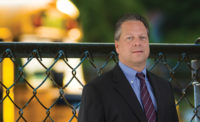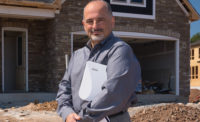

“Our company became involved with the city of Corpus Christi about 15 years ago,” says Matt Donnell, vice president of sales and design for Total Protection Systems Inc., also based in Corpus Christi. “It began as an access control hardware upgrade for city hall.”
The job soon expanded, however, into a full-fledged project. The system became truly enterprise-class just prior to September 11, Donnell says. “By using their WAN and LAN, they were able to say ‘let’s put card access, CCTV, intercoms and ID badging into a single solution.’ And that is where we and RS2 came in with the software and hardware to accomplish that.”
In its current incarnation, the system encompasses approximately 15 city departments, including fire, police, health, gas, water and waste. It includes traditional security components such as card access, fire and burglary monitoring, CCTV, intercom, and also less traditional ones such as guard tour, gas and chemical detection.
While all information is transmitted to one central location, each department has access to its part, and administrators are allowed overall access.
“They don’t need to be in their department to be able to monitor and control their system,” Donnell says. “If there is an emergency or disaster within a building, they have the ability – by being an integrated enterprise platform – to go to the emergency operations center and do all the things they could do in their own building. They can call up video, lock down doors, turn on fans, turn off elevators. It’s much safer for first responders.”
For Total Protection Systems, the most complex part of the undertaking was the need to take into account the unique needs of each different department. “It meant being hands-on, going to each individual entity and getting their specific requirements to make sure the system was flexible enough to hand that department’s needs.”
Probably the biggest commitment had to come from the city itself, Donnell adds. “The city was progressive enough and modern enough to position themselves for the bigger picture instead of taking or allowing the simpler stand-alone solution.”


